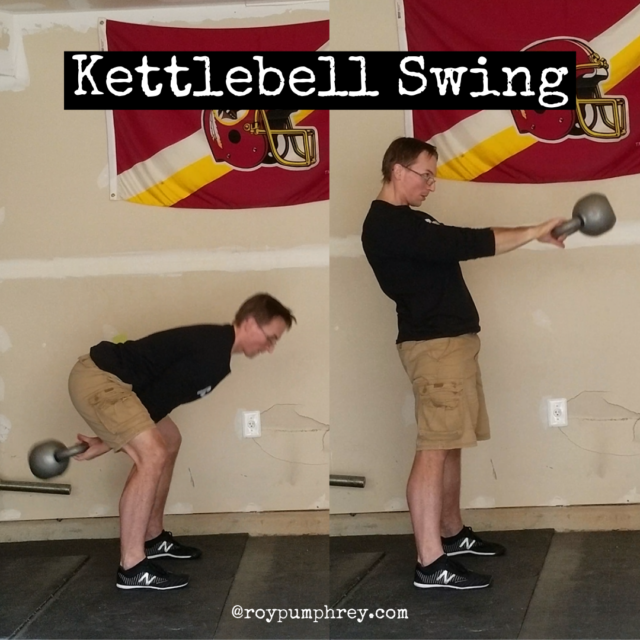
“If you could only do one exercise what would it be?”
I seriously HATE that question.
It instantly tells me that whoever is asking it is SUPER lazy.
Why?
Because why would you only do one exercise when you can do ANY and ALL of them?
BUT
If there was only one exercise I could do it might, MIGHT be the kettlebell swing.
Why?
Mostly cause it’s boss as all hell.
Other than that, it’s probably the best example of highly user friendly, easily applicable, total body, explosive strength.
“Strength and conditioning professionals may use both kettlebell swings and explosive deadlifts to increase deadlift strength and vertical jump power.” – Effects of Kettlebell Swing vs. Explosive Deadlift Training on Strength and Power
Kettlebell swings train the entire posterior chain,
- Feet
- Hamstrings
- Glutes
- Errectors
- Lats
- Even lower and mid traps
And even some of the anterior chain:
- Shoulders (NOT because you’re lifting the weight)
- “6 pack abs”
- Forearms
- Quads
Plus, kettlebell swings are super athletic teaching and training the ability to control the weight quickly yet aggressively, while maintaining your “center”.
Before we talk about what the Kettlebell Swing is, lets talk about what the Kettlebell Swing IS NOT.
“The Kettlebell Swing is a squat and a front raise”
ANYONE who says this should get the Ol Yeller treatment.
If your “coach” says this, FIRE THEM.
The #1 purpose of the Kettlebell swing is to generate for from the hips through a HIP HINGE…
Not a squat.
The height of the bell should be determined by the IMPULSE (force) generated by the hips and transmitted through the floor.
NOT by lifting the kettlebell up.
I’ve written about this before here: The Kettlebell Swing, It’s not a Squat/ Front Raise and it Doesn’t go Overhead.
“if boredom wasn’t an issue, the kettlebell swing is the ONLY exercise you would ever need to do in your entire life.
The problem is that the way most people do the kettlebell swing is DEAD WRONG!!!
Go into any gym and you’ll see inexperienced exercisers turning a swing into a front squat and shoulder raise exercise further tightening our hips, quads, chest and shoulders and just adding to the anterior dominance issue that I told you about above.
Simply put, improper kettlebell swing form just adds fuel to the already burning fire of postural imbalance. A perfect kettlebell swing will work your posterior chain muscles (back, abs, butt, hamstrings) and combat all the ill-effects of our anterior dominant Western Society.
It is, in fact, a hinge and NOT a squat movement. A hip hinge – like a deadlift movement – forces you to use those posterior chain muscles to move the kettlebell.” – Kettlebell Swings: The 1 Exercise That Fixes 99 Problems
Kettlebell Swings:
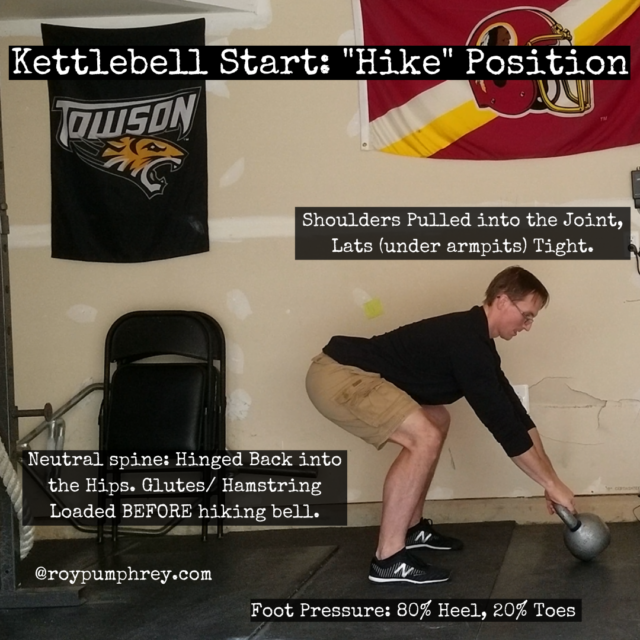
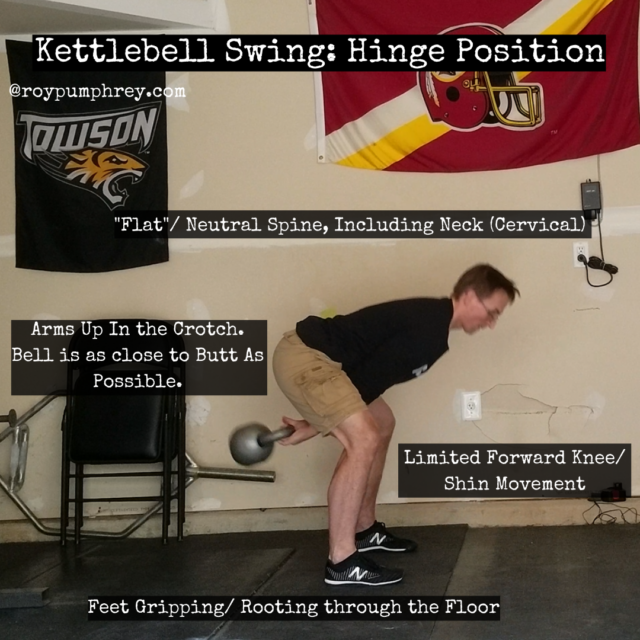
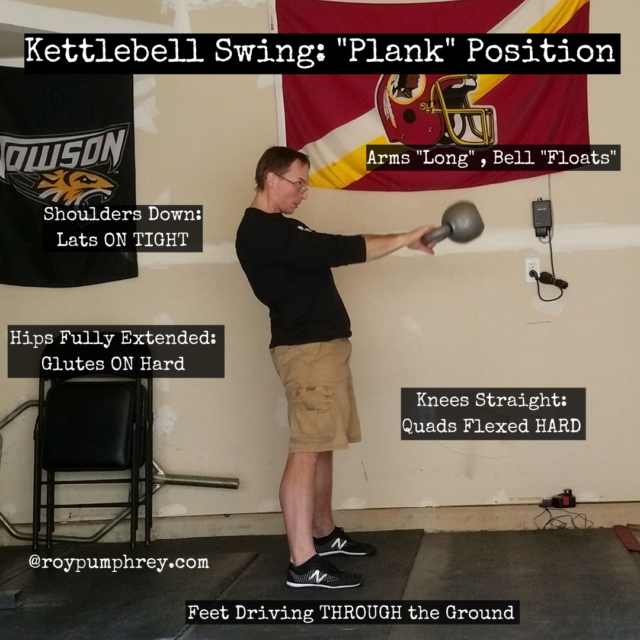
Checklist:
- Root the floor, create a tripod foot, root, and dig into the ground.
- Vertical to near vertical shins push back into the hips as far as you can.
- Start wtih the bell out in front of you like the a football center would set up to hike a football.
- Before “hiking” the bell pull the shoulders down into the sockets, connect the lats to the body.
- Open the hips by “screwing the feet out” to create even MORE hip tension
- Hike the bell back throwing the foerarms at the crotch
- SNAP the hips forward by VIOLENTLY driving the hips forward (glutes and hams) while driving the feet THROUGH the floor.
- At end hip extension KEEP you feet, quads and glutes fully contracted and TIGHT AF.
- PULL the bell back at your crotch
- Hinge and repeat.
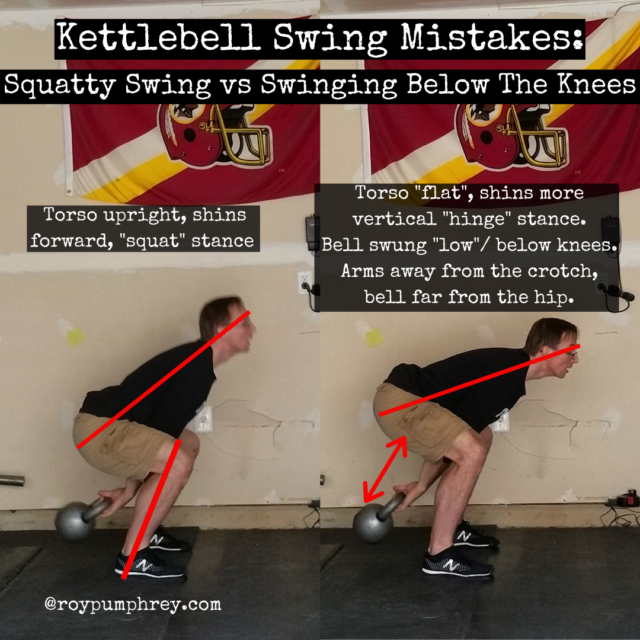
Bro Tips:
- Grip the hell out of the floor the whole rep. If you try to balance yourself rather than “root” a bell of any consequence, you know, a heavy enough weight that you’d actually get a training effect, will pull you off center and destroy the rep.
- Wait on the bell as you pull it into you, try to hinge as late as possible. That will
- Don’t worry about the height of the bell. The hip drive and weight of the bell should take care of that.
- Allow the bell to “float” at the top of the movement.
- Don’t worry about bent elbows or straight elbows, as long as the bell “floats”, you’re fine.
- DONT LIFT YOUR HEAD…this causes most people to limit their hinge and be pulled forward.
- Bring your chin down (aim for as near a neutral cervical spine as possible) and in general, look at where the floor and wall meet.
- “swing the bell high”, try to keep the bell above the knees. You wont be able to do this, especially with heavier bells, but try to. It’ll help reinforce the hinge and keep the swing motion short, compact and snappy.
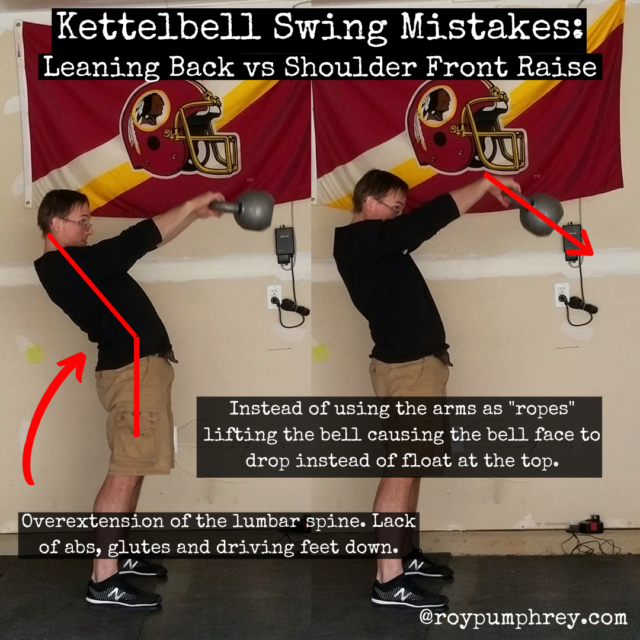
The 2 Best Pieces of Advice for the Kettlebell Swing:
#1: Think of the Arms as Ropes.
Keep them long, but taught through the motion.
If you ran a towel through the bell to swing it and the towel buckled, what would happen?
Obviously, the kettlebell would be taken off course.
If the towel stays taught, the bell stays on track.
Your arms are an extension of that towel.
#2: The Kettlebell Swing is a FAST Deadlift
It’s not a squat, it’s a hinge.
Tightness in the lats, core and quads (at the top) are important.
Drive should be from the hamstrings and glutes (like a deadlift).
Caveat: We call this portion of the program..
NOT EVERY EXERCISE IS GOOD FOR EVERY PERSON
Some people can NOT tolerate kettlebell swings due to the high shear forces even when that same person can tolerate heavy compressive loads,
“the large shear to compression load ratio on the lumbar spine created during swing exercises suggests that this training approach may be contraindicated for some individuals with spine shear load intolerance” – Kettlebell Swing, Snatch, and Bottoms-Up Carry: Back and Hip Muscle Activation, Motion, and Low Back Loads
All this means is, IF your technique is on point and you’re back doesn’t like swings…
DONT DO THEM.


